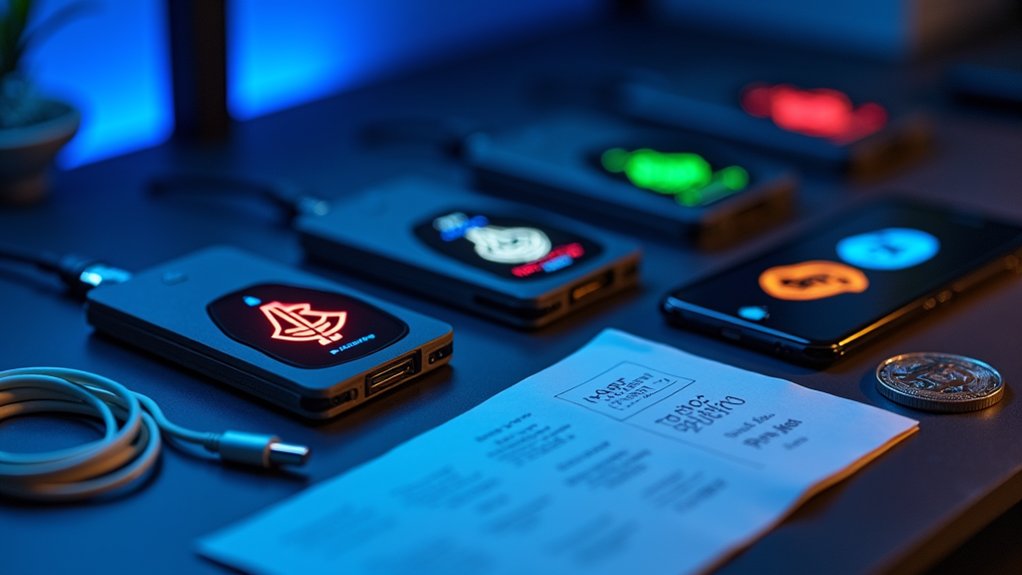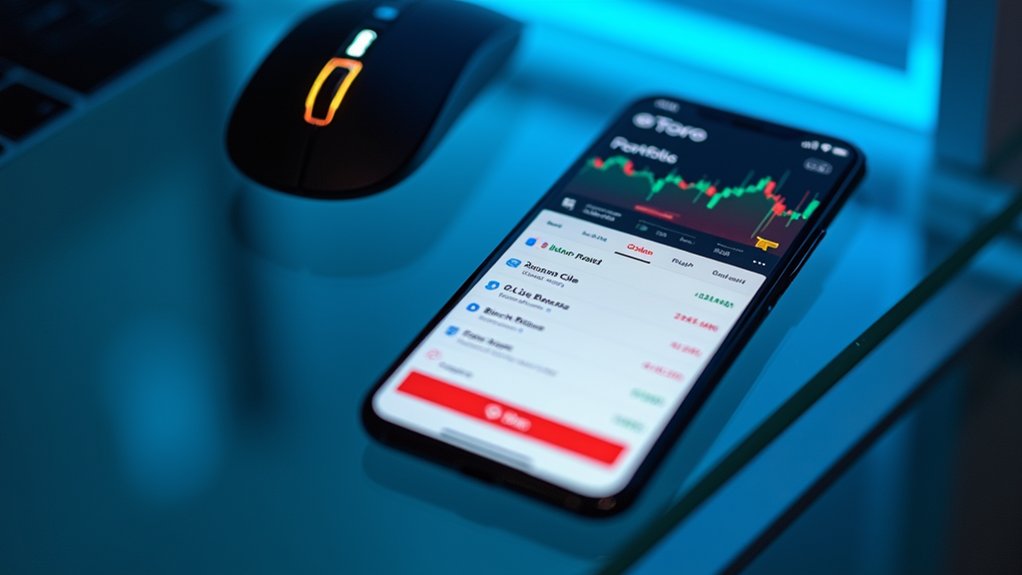Selecting a suitable cryptocurrency wallet involves evaluating security needs and usage patterns. Investors should consider custodial solutions like Coinbase for beginners, non-custodial options like MetaMask for greater control, or hardware wallets including Ledger or Trezor for maximum security. Each wallet type offers distinct features—from multi-chain support to integrated exchanges—with varying levels of protection. Critical security practices include implementing two-factor authentication, securely storing recovery phrases, and maintaining regular backups. The following sections explore these wallet categories in greater depth.

When maneuvering the intricate landscape of cryptocurrency management, investors must carefully evaluate the various wallet options available to secure their digital assets. The fundamental distinction between custodial wallets, where private keys remain with third-party services like Coinbase, and non-custodial alternatives, which grant users complete control over their keys, represents the initial decision point for prospective crypto holders. The former offers convenience at the cost of centralized vulnerability, while the latter provides enhanced security that appeals to more experienced users.
The operational environment of wallet systems further segments the market between hot wallets, which maintain internet connectivity to facilitate active trading through platforms such as Exodus or Trust Wallet, and cold storage solutions that operate offline to minimize security exposure. Crypto investors should implement advanced security measures including regular backups, strong passwords, and activity monitoring to protect their assets. This includes hardware devices from manufacturers like Ledger and Trezor that typically range from $50 to $200 depending on security features and interface capabilities.
Software wallets present diverse implementation approaches, from desktop applications to mobile solutions equipped with QR scanning functionality and NFC payment options. Many incorporate unified exchange services that enable direct trading without transferring assets to separate platforms. Modern wallets have significantly evolved since the first one was created by Satoshi Nakamoto to automate and simplify cryptocurrency transactions. Setting up these wallets typically requires creating an account with recovery phrases that must be securely stored for emergency access. Hardware alternatives, conversely, emphasize physical security through air-gapped designs, OLED screens for transaction verification, and manual confirmation buttons that prevent remote manipulation. However, potential users must verify device compatibility with their existing operating systems.
Paper wallets, while representing the most basic form of cold storage, demand meticulous attention to creation processes, physical protection against environmental damage, and regular integrity verification. Particular consideration should be given to their limited flexibility for partial fund transactions. Extensive security protocols, regardless of wallet selection, should incorporate two-factor authentication, secure storage of recovery seed phrases, vigilant malware prevention, and awareness of phishing attempts that target cryptocurrency holders.
Selection criteria should ultimately reflect an investor's specific requirements regarding multi-chain support, with solutions like Guarda offering compatibility with over 400,000 tokens. Ecosystem amalgamations for particular use cases, such as MetaMask's Ethereum dApp functionality, recovery mechanisms, and overall user experience considerations should balance security with operational simplicity.
Frequently Asked Questions
What's the Difference Between Hot and Cold Crypto Wallets?
Hot and cold crypto wallets differ primarily in their connection to the internet.
Hot wallets, being software-based and online, facilitate convenient transactions but face heightened security vulnerabilities.
Cold wallets, conversely, store private keys offline on hardware devices, considerably reducing exposure to cyber threats.
While hot wallets excel in accessibility for frequent trading and platform unification, cold storage provides superior protection for substantial holdings, making each suitable for different aspects of cryptocurrency management.
Can I Recover My Wallet if I Lose My Seed Phrase?
Recovering a cryptocurrency wallet without a seed phrase presents significant challenges, though several options remain accessible.
Users may attempt restoration through wallet backup files, device searches, or contacting support services for assistance.
Professional recovery services, including forensic specialists utilizing advanced computational methods, offer potential solutions at considerable cost.
For prevention, implementing multisignature arrangements, encrypted digital backups, or social recovery systems substantially mitigates future risks associated with seed phrase loss.
Are Crypto Wallets Insured Against Hacks or Theft?
Crypto wallets, particularly non-custodial or self-hosted options, typically lack insurance against hacks or theft, leaving users fully responsible for their security.
Custodial wallets managed by exchanges sometimes offer limited protection, though coverage varies considerably between providers.
While certain platforms advertise insurance policies, these protections generally cover only the platform's infrastructure vulnerabilities rather than user negligence, for instance compromised credentials or phishing attacks.
Users should thoroughly evaluate each provider's specific insurance terms before proceeding.
How Do Hardware Wallet Backup Systems Work?
Hardware wallet backup systems primarily utilize cryptographically secure recovery seed phrases, typically containing 12-24 words from the BIP-39 standard, which must be stored physically separate from digital devices.
Alternative proprietary solutions include Cryptnox's dual-card system and Cypherock X1's key-splitting technology, which distributes private key fragments across multiple physical cards.
These systems require verification through a testing protocol: resetting the device, restoring via the backup mechanism, and confirming blockchain address consistency to guarantee proper functionality.
Do Cryptocurrency Wallets Work With All Blockchain Networks?
Cryptocurrency wallets do not universally support all blockchain networks, since compatibility varies greatly between providers.
While EVM-compatible chains share interoperable addresses, non-EVM networks like Solana, Bitcoin, and Filecoin require chain-specific addresses.
Multi-chain wallets offer broader support, though web interfaces typically maintain narrower compatibility than mobile applications.
Users must verify network compatibility before transactions, since sending assets to unsupported networks typically results in permanent, irreversible loss requiring external bridging services for recovery.









